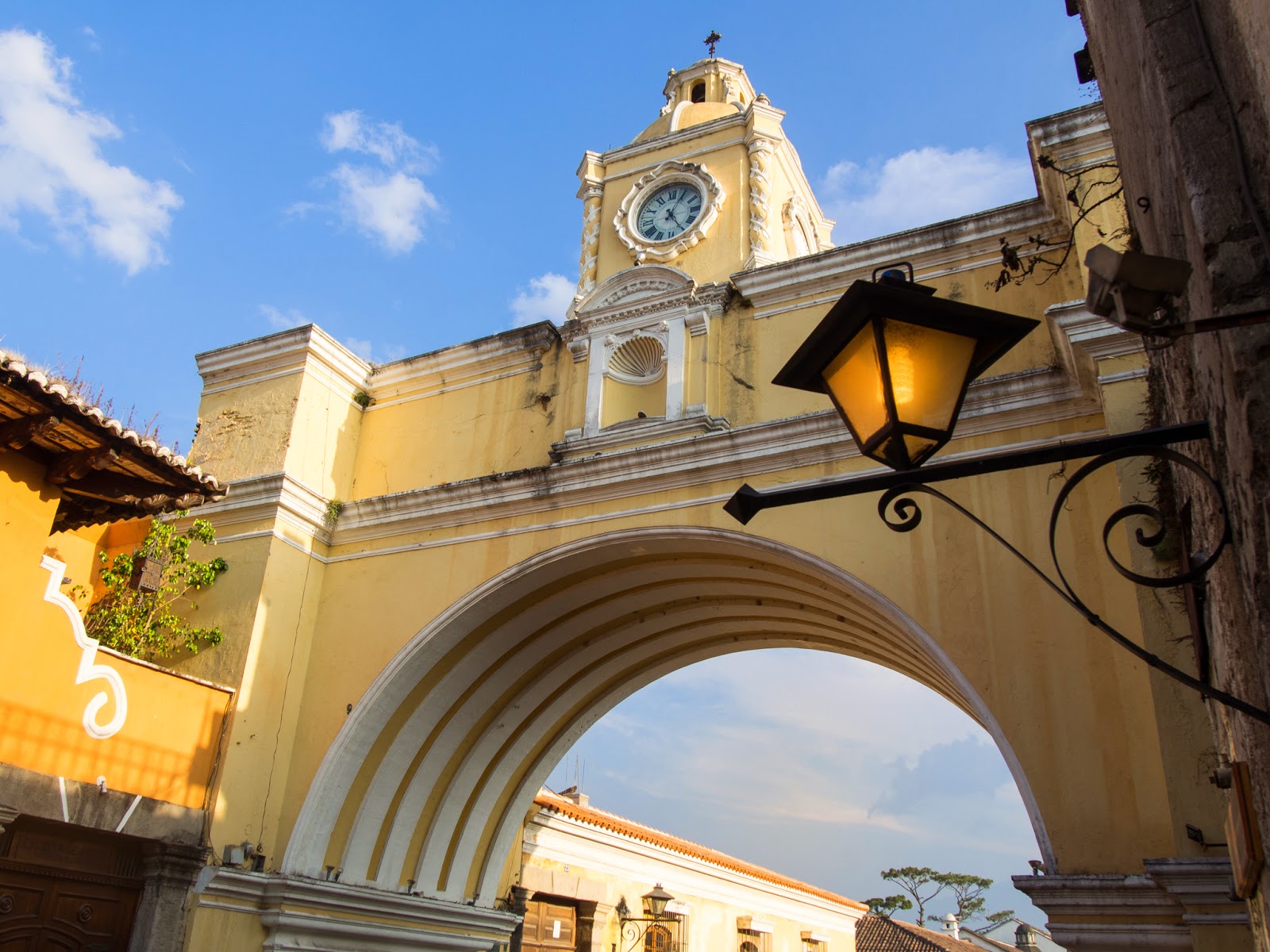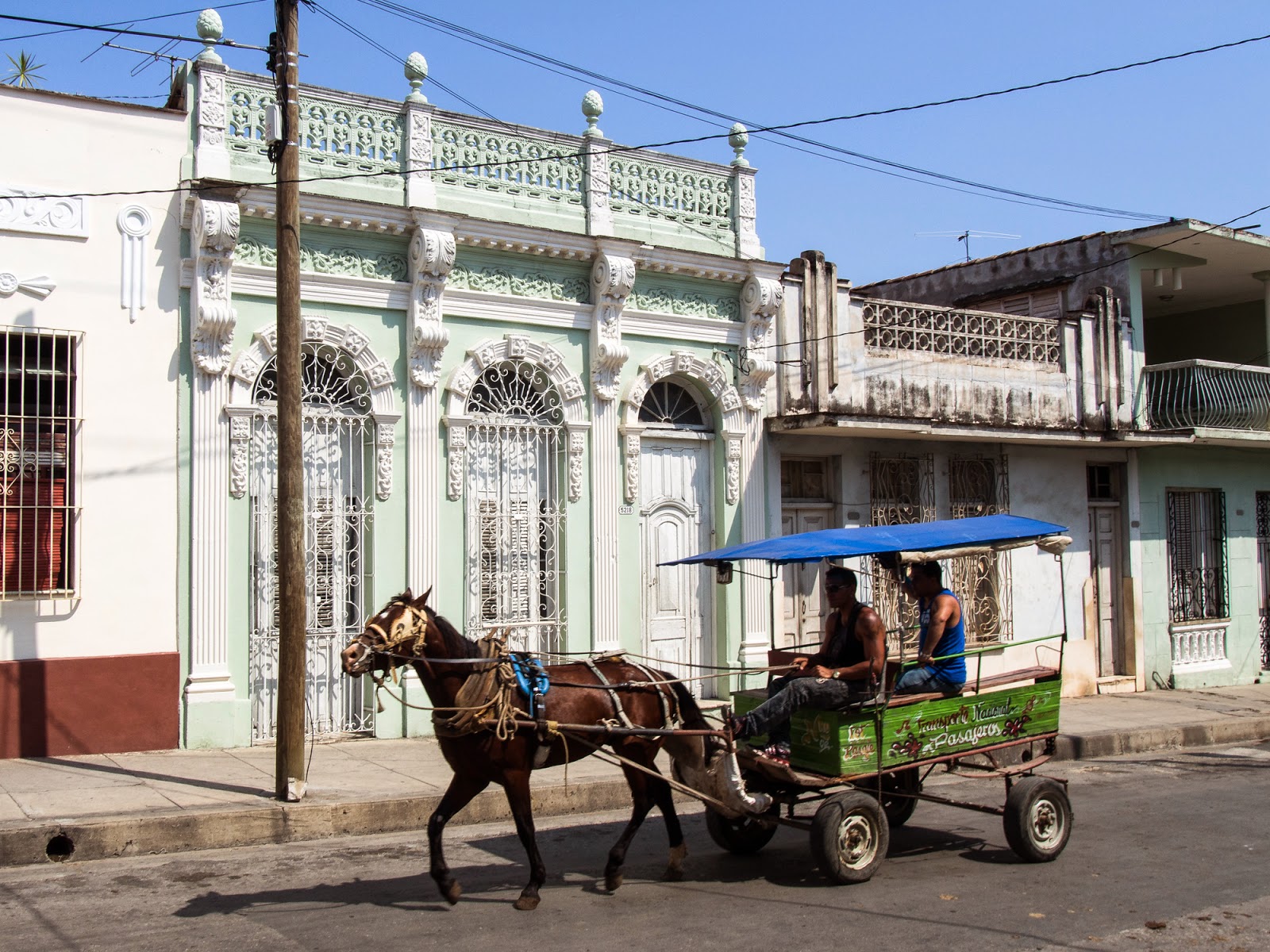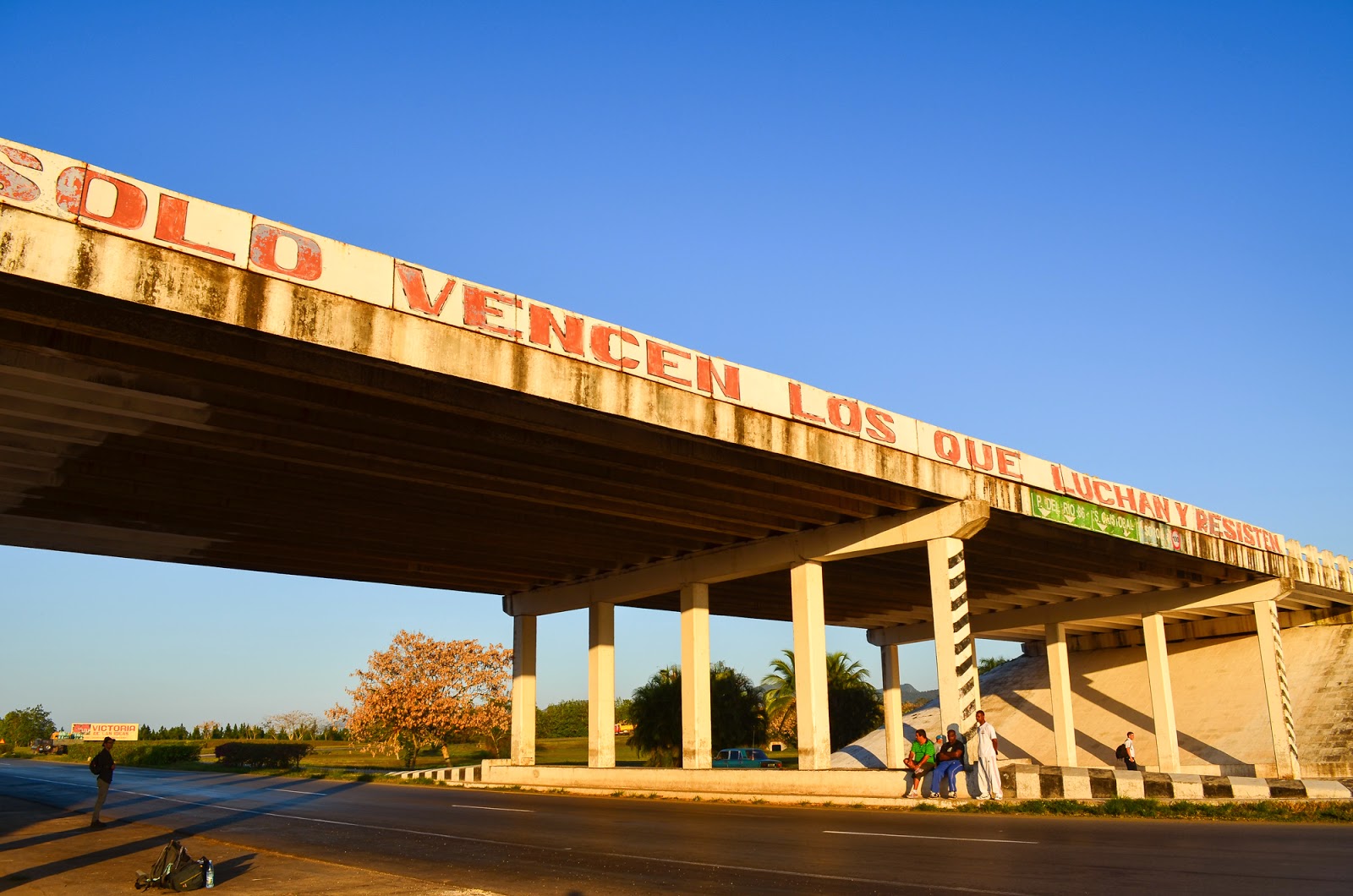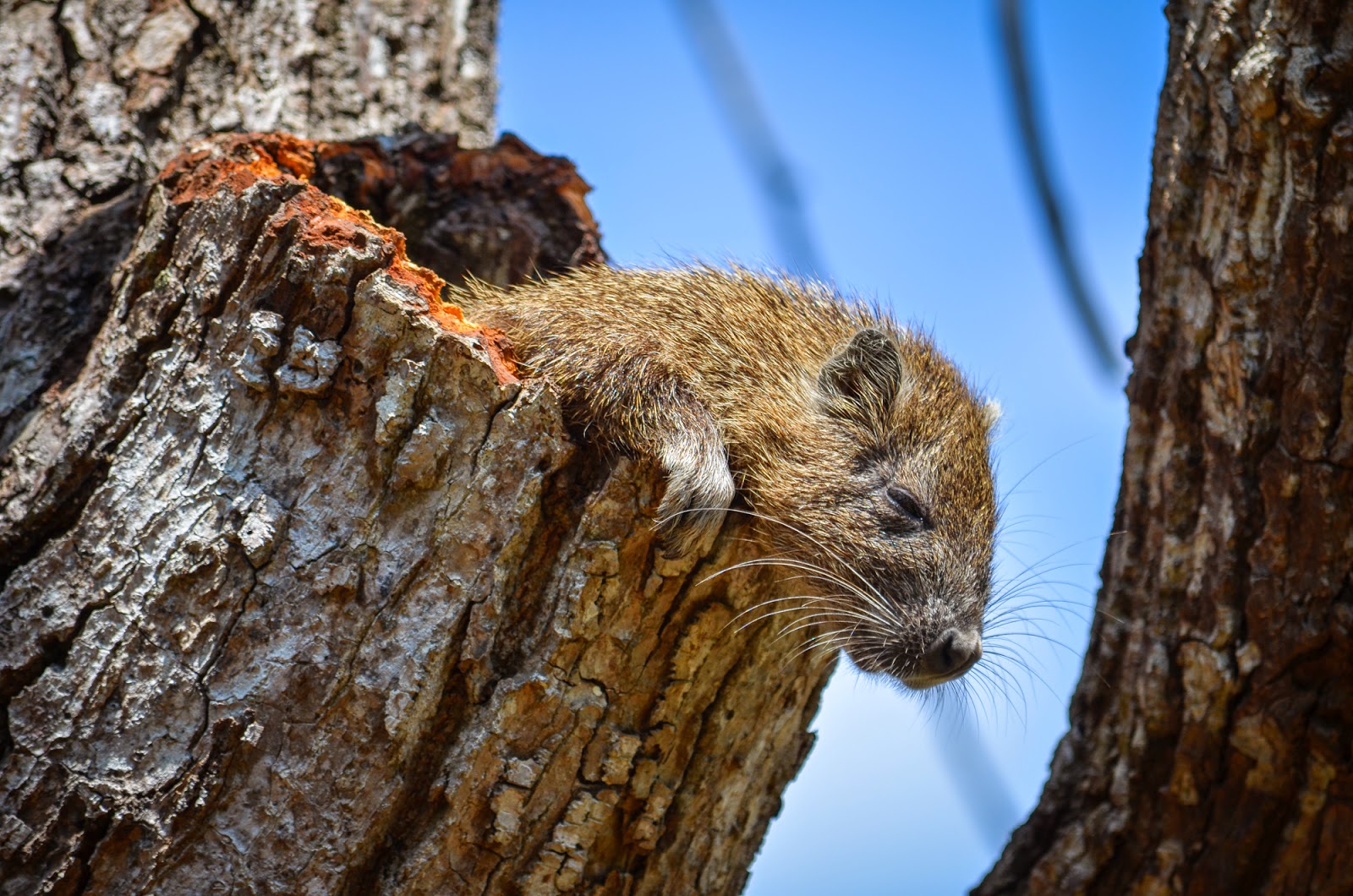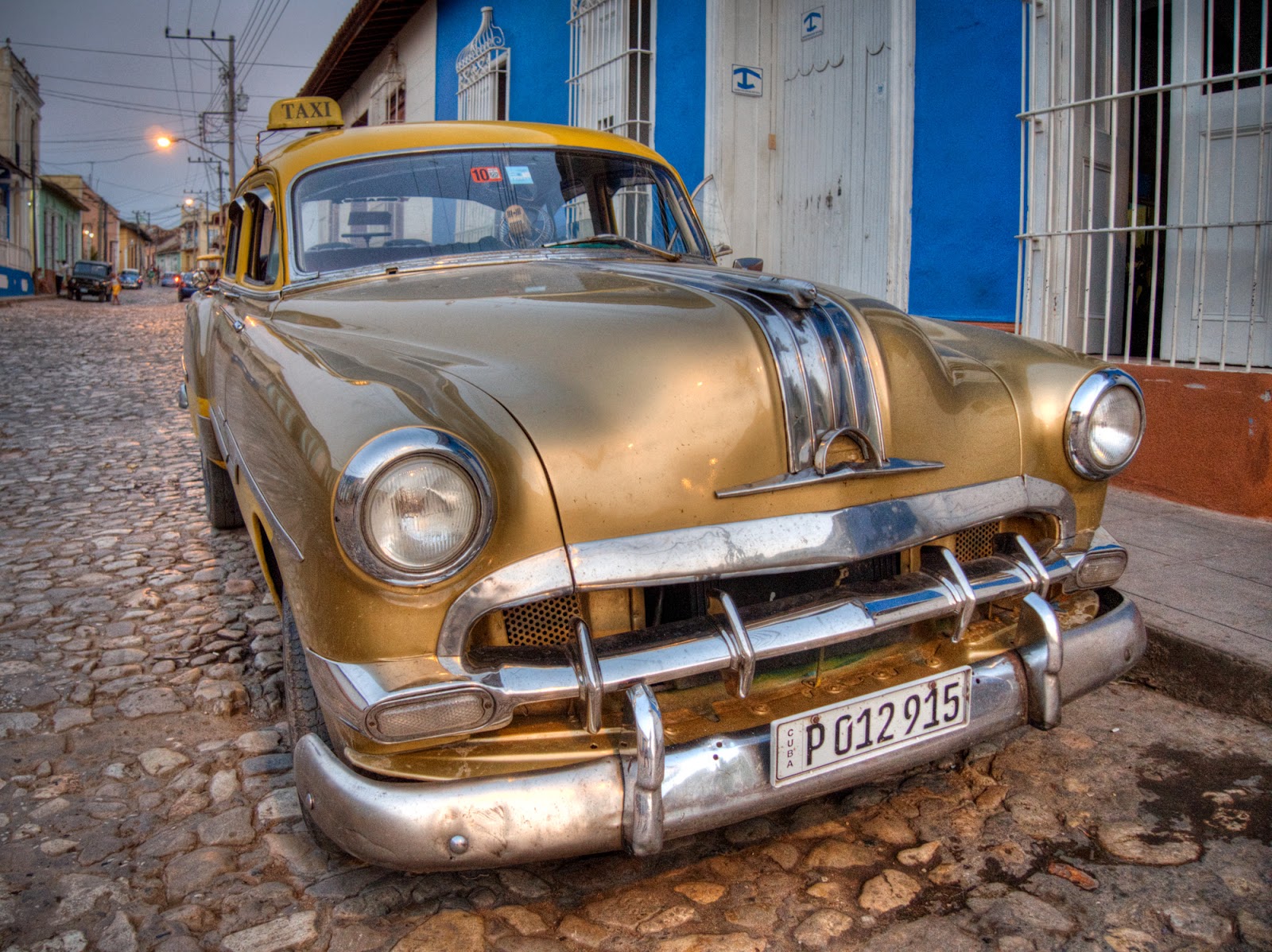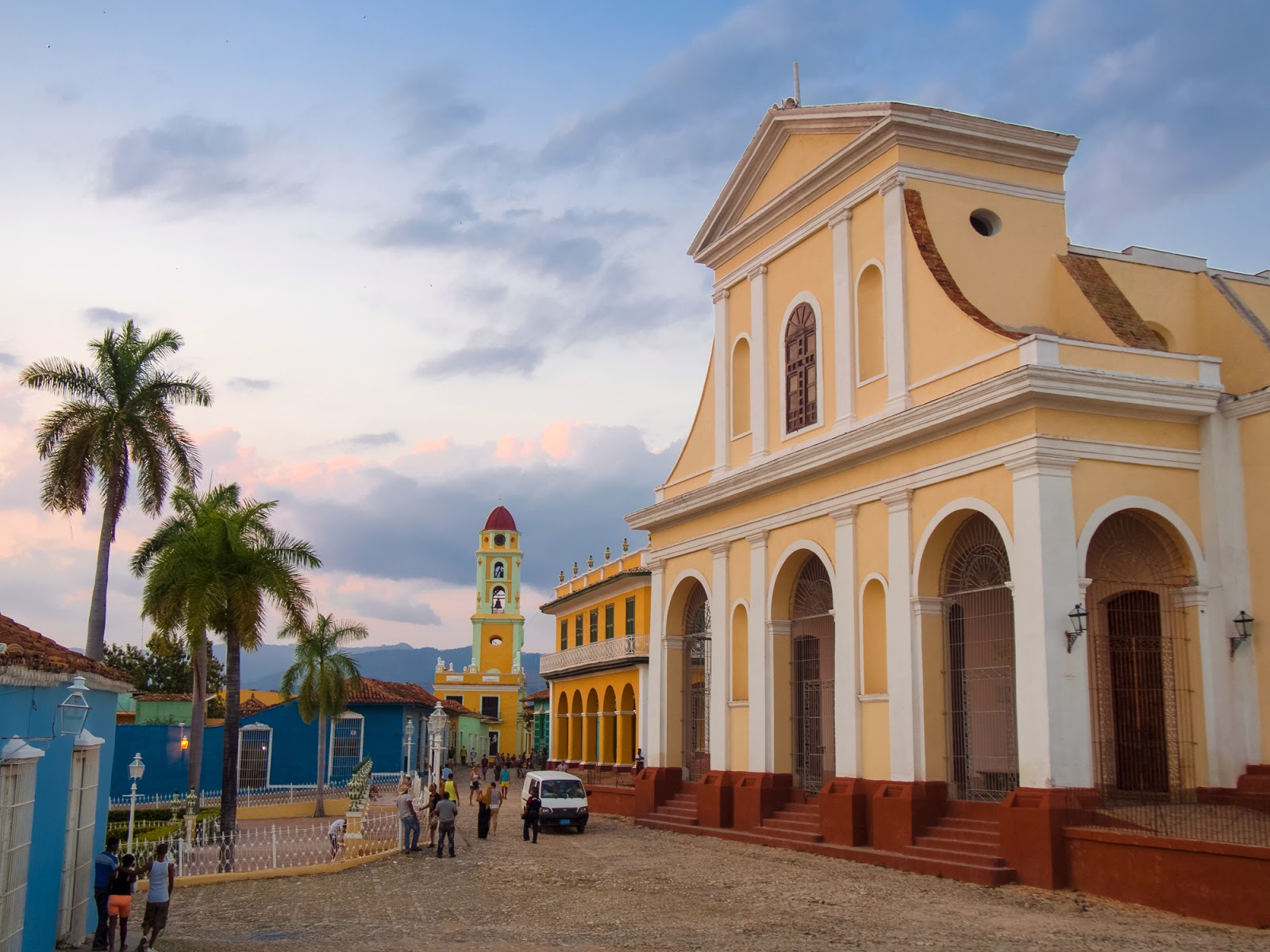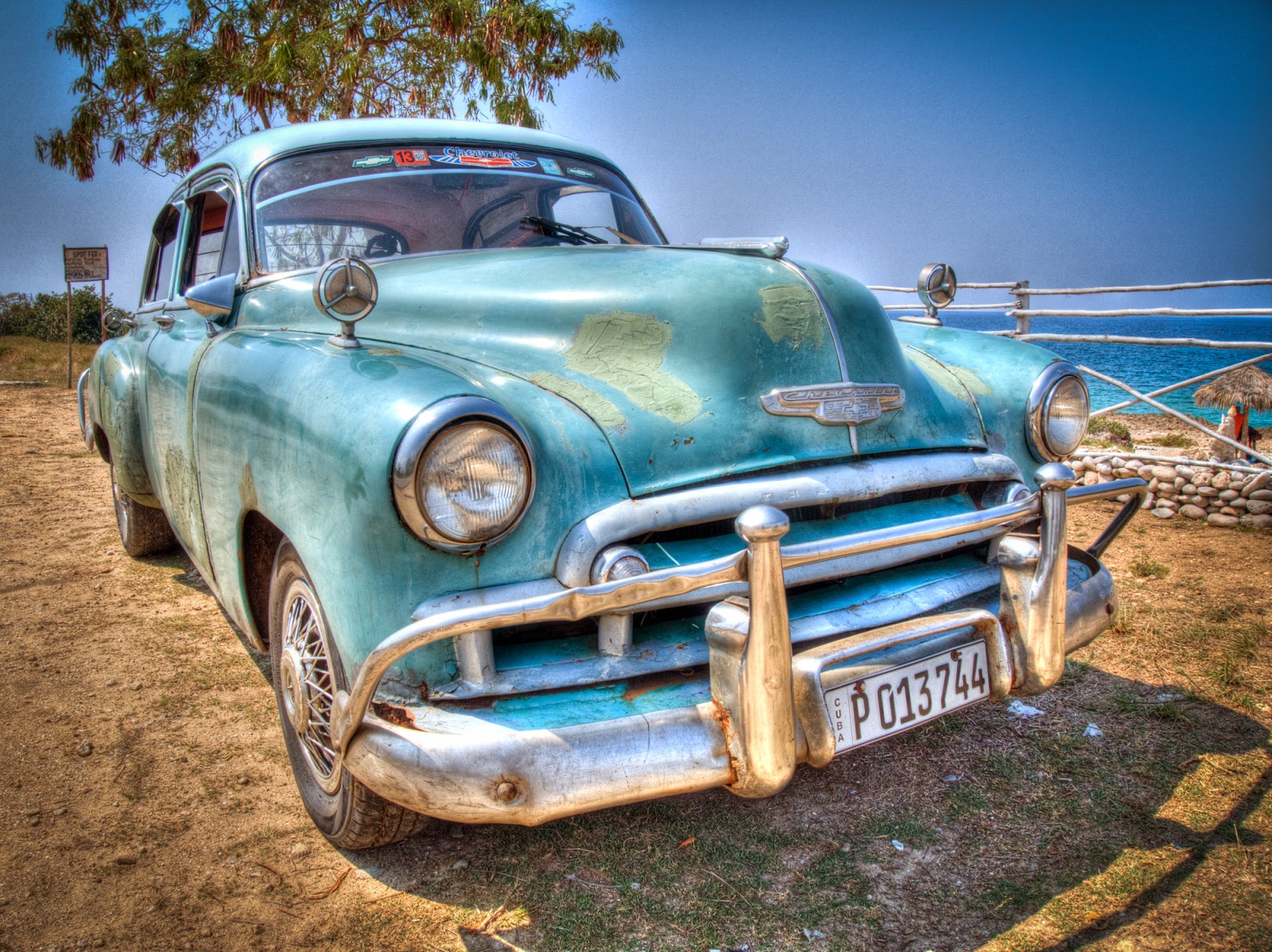On a crowded chicken bus
– a former US school bus painted like it's going to star in a
monster truck show now used to facilitate intercity travel in
Guatemala – I found myself chatting with a local that grew up in
Los Angeles. A wizened minstrel in a Mayan tunic hopped onboard and
played some Latin pop songs on his guitar while I watched a blur of
trees in volcanic soil creep past through the window. I smelled of
tequila from a bottle that did not survive my flight from Havana,
leaving all my books and clothes baptized in agave and broken glass.
This route, so I was told, from the capital to the city of Antigua
occasionally sees its bus drivers beheaded for failing to pay their
dues to the cartel.
More surprising to my eyes, in my fleeting hours in Guatemala City and then repeatedly afterward, was the diminutive stature of our neighbors to the south. Whereas I was pleased to see in Mexico a thriving incorporation of native culture, Guatemala seemed to be inversely a country of natives with incorporation of European culture. Tiny Mayan women in lovely knit dresses were on every corner hawking Mayan this's and thats's. Prior to this particularly trip, I suppose I had naively assumed that the U.S.'s near total domination and diminishment of its native peoples – particularly in its big cities – was also reflective of the condition in the rest of the Americas, and I was happy to find I was wrong.
I hopped off the bus in Antigua's outskirts and ambled toward where I was hoping I'd find the city center. I was shortly intercepted by a a Canadian family that warned me I was in a part of town I ought not to be alone in with all of my belongings.
When the clouds permit it, an ominous volcano watches over colorful Antigua, a colonial town split tidily along a cobblestone grid dotted with grand old cathedrals of every degree of upkeep – many struck down to stony skeletons by earthquakes in the passing of centuries. Sometimes broken things can be so beautiful. Blue sky might shine through what was once a painted dome, and the reeds and bushes that mark their paths and creep up the walls celebrate their advances in the endless drama of man vs. nature.
Guatemalan cuisine seemed harder to find than sushi, and there was even a Staples for me to pay a visit to when the last of my pens had run dry or missing. I got the sense that Guatemala's tourists are corralled into more specific geographic locations than in most countries – perhaps for safety reasons.
Days earlier, sharing rum in Havana with an Australian flight controller and a loud young Englishman wearing a shit that read, “Guat-ever!” I was told I shouldn't miss a visit to lake Atitlan, a great lake not too far from Antigua with a huge expat community and dramatically set before two great volcanoes (volcanoes are really what's up in Guatemala). So I talked Henry in joining me for a day trip a little to the northwest. At dawn we crammed into a van that wound for hours through piney hills, smoke scented farms, and bustling towns full of knit Mayan dresses and ceramic pottery stalls.
After passing a final hilltop we began a descent into the valley that holds the beautiful lake Atitlan and our van was suddenly full of gawking rubberneckers swiveling their heads left and right in opposition to our vans orientation as we slid steeply down a ridgeback road into a dockside village.
Like in Antigua, the
volcanoes in Atitlan were shy, and spent most of their time hiding
their immensities behind curtains of mist.
Further along the lake, following the rim clockwise, we found ourselves strolling up and down the steep alleyways of San Antonio Palopo, an even larger Mayan village. We caught some shade and our breath in a ruddy little cathedral with a sweeping view of the lake and this diagonally set village tumbling down the hills into the water.
It shouldn't be surprising to overhear the locals speaking only in Mayan, but I found its staunch disparity from Spanish and my lack of expectation to give their intonations a fascinating beauty.
Henry was in Guatemala
for a wedding, and back in Antigua we joined the wedding party for
dinner and dancing. I tried to demonstrate what a couple hundred
dollars in Salsa lessons in Cuba might accomplish, first with a
gringa then with a a tall Guatemalan with deep set eyeshadow. It
turns out I'm still worthless at doing the Salsa and after I parted
with my second dance partner, Henry grabbed my arm and asked,
“Matthew, you know that's a tranny don't you?” I chuckled as
that fact became clear to me and I realized that better justified the
fact that she approached me
at the bar.
For maybe half an hour I was drunk and in love with a tiny Guatemalan girl I was dancing with. She had curly hair, wore only black, and seemed not to know a word of English. When she left, I decided the party was over for me and moseyed back to wherever my bunk was waiting for me.
The morning after, the wedding party had booked a tour of the nearby Pacaya Volcano and saved me a spot, but I must have mentally logged the wrong meeting spot and they had to leave without me while I was running around the town square just hoping to bump into them along their way. Undeterred, as I'd never been up close to a volcano, I got on the next bus I could find heading to Pacaya.
By law, visitors to the volcano are required to have a guide, thanks to the previously high rates of armed robbery along the volcano's trails. Two guards with shotguns stood watch by the trail head. The gradient on the trails was considerable. The hills were green at first and yielded both fertile farmland and energy for the nearby geothermal plant. The greens and browns as we climbed higher slowly faded into greyscale as the mist in the background wrapped denser and closer, and the trees stopped growing for the inhabitability of the crumbly basalt we stepped on. When we reached the first peak nearby figures became mere silhouettes in the shroud.
I was hoping to see a brilliant stream of bright red lava, or the kind of sulfurous pit befitting the sacrifice of young virgins to appease sadistic deities, but was rather disappointed when we converged on a little red hole in the ground. Even without this little red hole, the atmosphere of the hike along was well worth the price of admission, and my companions took marshmallows from our guide to roast upon this tiny tear in the earth. Not a fan of eating sweetened goo made out the tendons and skin of cows and pigs but still wanting to partake in the novelty, I brought along one of my last Cuban cigar, which I stabbed with a stick and smoked there on top of the volcano.
I intended to have left Antigua earlier than I did, but I really hit it off with the wedding party and the couple to be wed invited me to join the wedding at an eco-lodge deep in the hills above the city.
She
was an American and he was a Guatemalan. The wedding procession was
led by four adorable Guatemalan kids in traditional outfits in white
and red. Henry, as a friend of the bride's, came down with the
procession with the bridesmaids, his tie matching their dresses. The
ceremony went down mostly en Espanol, and for what I assume are
entirely legal reasons, the officiant had to go over the bride's
legal information in great detail, and I believe he read aloud her
passport number not once, but twice.

